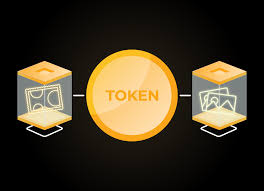Service Set Identifiers In Computer Network
Blog Credit: Trupti Thakur
Image Courtesy: Google
Service Set Identifier (SSID) in Computer Network
The primary name for an 802.11 wireless local area network (WLAN), which includes both home networks and public hotspots, is Service Set Identifier (SSID). This name is used by client devices to identify themselves and join wireless networks. For instance, while attempting to connect to a wireless network at work or school with the name guest network, you notice there are several others in the area with completely different names. The SSIDs for those networks are all the names you can see. A broadband router or broadband modem stores the SSID on home Wi-Fi networks, but administrators can modify it. This name is broadcast by routers to aid wireless clients in locating the network.
The Service Set Identifier (SSID) is a case-sensitive text string with a maximum length of 32 characters that can be made up of either letters, numbers, or both. The SSID is completely unrestricted by these guidelines. Manufacturers of routers pre-program the Wi-Fi unit with a default SSID, such as TP-LINK, D-LINK, JIO FI, or simply DEFAULT. Not all wireless networks have a standardized name like that because the SSID can be modified.
What is a service set identifier (SSID)? A service set identifier (SSID) is a sequence of characters that uniquely names a Wi-Fi network. An SSID is sometimes referred to as a network name. This name allows stations to connect to the desired network when multiple independent networks operate in the same physical area.
A default SSID can be as simple as the router’s brand name to something a little more complex. For example, while many default SSIDs are called “Linksys” or “Netgear,” others are mixtures of brand names and random numbers.
The SSID consists of 32 alphanumeric and case-sensitive characters that help to establish a secure connection. SSID helps to differentiate amongst the network. SSID has its security when it is open with any kind of network.
Devices’ SSID usage –
Mobile phones, laptops, and other wireless devices search the neighborhood for networks broadcasting their SSIDs and displaying a list of names. By selecting a name from the list, a user can connect to a fresh network connection. The device typically indicates a secured network by placing a lock symbol next to the SSID.
The majority of wireless devices record the various networks a user joins as well as their preferred connection settings. Additionally, users can configure a device to join networks with specific SSIDs automatically by saving that setting in their profiles. To put it another way, after you connect, the device typically asks if you want to save the network and reconnect automatically later.
Since it essentially necessitates that clients know two passwords-the SSID and the network password-most wireless routers provide the option to disable SSID broadcasting in order to increase Wi-Fi network security. The effectiveness of this method is constrained, though, because it’s simple to extract the SSID from the header of data packets passing through the router. The user must manually create a profile with the name and other connection details in order to connect to networks with disabled SSID broadcast.
SSID prevents unauthorized access to a wireless network. If any device tries to connect to the Wi-Fi network without SSID, the router’s security mechanisms kick-in and prevent access to that device.
An issue with SSIDs
- If a network’s wireless security features are not enabled, anyone can connect to it by simply knowing the SSID.
- The likelihood that another nearby network will share the same name increases when a default SSID is used, which may cause wireless clients to become confused. A Wi-Fi device will prefer and possibly attempt to automatically connect to the stronger radio signal when it finds two networks with the same name, even though this may not be the desired option. The worst-case scenario is that a person could be disconnected from their own home network and reconnected to a neighbor who has login protection disabled.
- Only general and sensible information should be included in the SSID chosen for a home network. Some names, such as Hack My WIFI If YouCan, unnecessarily incite burglars to prioritize some homes and networks over others.
- An SSID may contain coded messages or language that is offensive to the public.
Blog By: Trupti Thakur

13
JunService Set Identifiers in Computer Network
Jun 13, 2023Recent Blog
India’s First Creator LandMay 21, 2025
Tokenization – An Initiative By RBIMay 20, 2025
The BioMetric E-PassportsMay 19, 2025
AI HallucinationsMay 16, 2025
India’s Steps Into 6GMay 15, 2025




